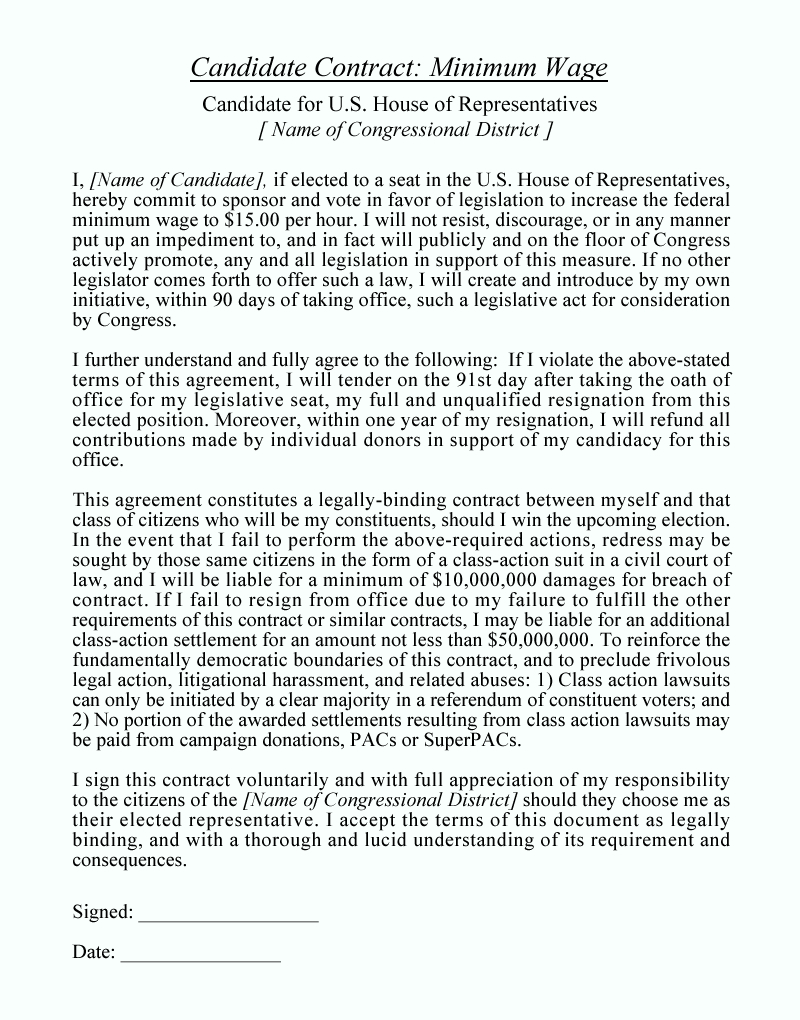 Bernie Sanders talks eagerly about a “revolution”.
Bernie Sanders talks eagerly about a “revolution”.
While this obviously is fantastic campaign rhetoric, his presidential aspirations fall a bit short of a revolution. Many of his ideas for reforming the political system, revamping our national priorities, and replacing the current agenda with one that serves the greater good of the vast majority of citizens, notably are consistent with revolutionary change. It is hopeful, heartening, inspiring, truly a breath of fresh air in the stagnant and highly toxic atmosphere of the now dominant neoliberal/neocon regime in Washington DC.
But the simple fact remains: We’re not electing a king. We’re only electing a president. Reform comes from changing the laws. Changing the laws comes from changing the law makers. Either we change their minds or we change them, meaning we replace them with elected public servants who will serve the public instead of their corporate masters.
This entire series of articles is about exactly that . . . the need for such change and how I see that coming about.
It’s all about people power. Not PACs and SuperPACS. Not big piles of money — though the enormous sums the wealthy throw into the ring present a formidable obstacle for even the most organized and energetic citizens groups.
Change still comes down to the choice each of us personally makes in the voting booth. Power resides in our aligning our individual choices, so that collectively — as in tens of millions of us united in an unstoppable juggernaut of people power — we get done what needs to get done.
I’ve already pointed at many crucial issues where there is substantial agreement.
75% of Americans want a federal minimum wage of $12.50 per hour.
63% of Americans want a federal minimum wage of $15.00 per hour.
75% of voters want fair trade agreements protecting jobs, workers, the environment.
76% of voters want a cut back on military spending.
76% of voters want the U.S. completely out of Afghanistan.
79% of voters want no reductions in Social Security, 70% support expanding it.
79% of voters want no reductions in Medicare.
80% of voters oppose the “Citizens United” U.S. Supreme Court decision.
68% of voters think taxes on the wealthy should be increased.
71% of voters support massive infrastructure renewal.
74% of American voters are for ending oil industry subsidies.
93% of voters want GMO labeling on their food.
In Part IV of the series, I recommended collecting signatures from folks on a combination pledge-petition, which does two things: 1) it ascertains the level of local voter support for specific issues; and 2) invites individuals to take a stand on those issues, i.e. solicits their commitment to only vote for candidates who if elected will represent them and promote the agenda their constituents have united behind.
So we are now confronted with a critical question . . .
How do we know a candidate will do what we want once elected?
My solution is so simple and so obvious, many scoff and dismiss it immediately.
These are the same types of people who, by the way, stood on the beach at Kitty Hawk, scoffing and derisively observing: “Ha! That contraption will never fly!”
The short answer is . . . we make the candidate sign a legally-binding contract.
While the contracts can address any number of issues, here is an example, specifically for a candidate running for House of Representatives, demanding an increase in the minimum wage to $15.00 per hour.
If you’re immediate reaction is . . .
“Why, my congressman will never sign something like that!”
. . . all I can do is jump for joy! It means we’re getting somewhere!
I’ll explain exactly how this is intended to work in the next installments of Putting Boots (Birkenstocks) on the Ground. But before we go there, I have to make one critical point. This really has to sink in and be fully understood in order to appreciate the power of the candidate contract and its potential as a game-changer in our current dysfunctional political environment. Here it is . . .
While the candidate contract is a legally-binding agreement, properly implementing it is NOT A LEGAL STRATEGY.
IT’S A POLITICAL STRATEGY!
This is not about courts and juries and lawyers.
It is about forcing elected representatives to represent us.
It is using a legal instrument to our POLITICAL ADVANTAGE!
Please repeat this as often as needed for it to sink in . . .
Candidate contracts are legal instruments to force democratically-elected representatives to represent their constituents. They are political levers!
They are POLITICAL SLEDGEHAMMERS!
All will become clear in the next installments.




